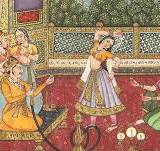The Timeless Beauty of Vincent van Gogh’s Paintings
Vincent van Gogh, a Dutch post-impressionist painter, is renowned for his unique artistic style and emotional expression in his paintings. Despite facing personal struggles and challenges during his lifetime, van Gogh created a body of work that continues to captivate art enthusiasts and scholars around the world.
Color and Emotion
Van Gogh’s use of vibrant colors and bold brushstrokes is a defining feature of his paintings. His ability to convey emotion through color is evident in masterpieces such as “Starry Night” and “Sunflowers.” The swirling skies and luminous stars in “Starry Night” evoke a sense of wonder and introspection, while the vivid hues of the sunflowers radiate warmth and vitality.
Brushwork and Texture
Van Gogh’s distinctive brushwork creates a sense of movement and energy in his paintings. The thick application of paint, known as impasto, adds texture and depth to his works, inviting viewers to engage with the canvas on a tactile level. This technique can be seen in paintings like “The Bedroom” and “Irises,” where each brushstroke contributes to the overall composition.
Nature and Humanity
Nature was a recurring theme in van Gogh’s art, with landscapes such as “Wheatfield with Crows” and “Olive Trees” showcasing his deep connection to the natural world. Through his depictions of rural life and everyday scenes, van Gogh captured the beauty and simplicity of human existence, imbuing his subjects with dignity and grace.
Legacy and Influence
Although van Gogh’s artistic career was brief, his impact on the art world has been profound. His bold experimentation with color, form, and expression paved the way for future generations of artists to explore new possibilities in painting. Van Gogh’s legacy continues to inspire creativity and innovation in contemporary art practices.
From the vibrant colors to the expressive brushwork, Vincent van Gogh’s paintings remain a testament to the power of art to transcend time and touch the soul.
Exploring Vincent van Gogh: Valuation, Iconic Works, Unique Style, and His Tragic Demise
- How much is a real Vincent van Gogh painting worth?
- What is Vincent van Gogh’s most famous painting called?
- What is so special about Vincent van Gogh’s paintings?
- What caused the death of van Gogh?
How much is a real Vincent van Gogh painting worth?
The value of a genuine Vincent van Gogh painting can vary significantly based on factors such as the specific artwork, its provenance, condition, and market demand. Van Gogh’s works are highly sought after by collectors and art enthusiasts worldwide, often fetching millions of dollars at auctions. The rarity and historical significance of an authentic van Gogh painting contribute to its high appraisal value. However, determining the exact worth of a van Gogh piece requires expert evaluation and authentication to ensure its legitimacy and quality in the art market.
What is Vincent van Gogh’s most famous painting called?
Vincent van Gogh’s most famous painting is widely recognized as “Starry Night.” This iconic masterpiece, created in 1889, showcases van Gogh’s unique artistic style and emotional depth. The swirling sky, luminous stars, and tranquil village below capture the essence of van Gogh’s vision and creativity. “Starry Night” has become a symbol of artistic brilliance and continues to captivate audiences with its beauty and profound expression of the artist’s inner world.
What is so special about Vincent van Gogh’s paintings?
Vincent van Gogh’s paintings are revered for their exceptional blend of emotional depth, vibrant colors, and unique artistic expression. What sets van Gogh’s work apart is his ability to convey intense emotions and inner turmoil through his distinctive brushwork and use of color. His paintings capture the essence of human experience with raw honesty and sensitivity, resonating with viewers on a profound level. Van Gogh’s art transcends mere representation, inviting us to contemplate the complexities of life, nature, and the human spirit through his bold and captivating compositions. The special quality of van Gogh’s paintings lies in their ability to evoke powerful emotions, stir the imagination, and leave a lasting impact on all who behold them.
What caused the death of van Gogh?
Vincent van Gogh’s death has been a subject of much speculation and debate among art historians and medical experts. The prevailing belief is that van Gogh died by suicide in 1890, at the age of 37, after struggling with mental health issues throughout his life. His battle with depression, anxiety, and emotional turmoil is thought to have culminated in his tragic decision to take his own life. Despite the circumstances surrounding his death, van Gogh’s artistic legacy continues to shine brightly, immortalizing him as one of the most influential painters in art history.


